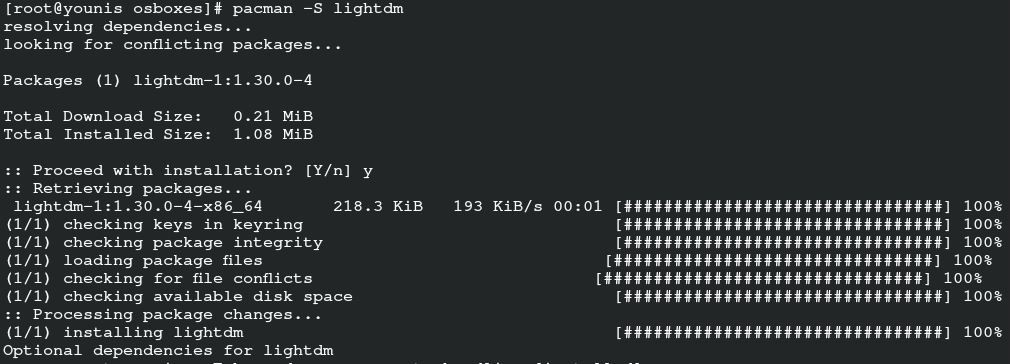This process may be somewhat can be upsetting. It is because of the accompanying reasons: If you are new to Arch or if you are discovering an approach to set up a server in some way. However, there is no issue with that by any stretch of the imagination. You are way closer to a working area than you may really think.
In light of your own decision, The Arch provides you the definitive order to pick your ideal graphical work area. That is the motivation behind why Arch didn’t introduce a default graphical work area. If you are new and unfamiliar to this, or on the off chance that you are searching for a dependable proposal, XFCE is an incredible and a marvelous spot to begin. It is liberated from cost and offers open-source work area conditions that are accessible to some working frameworks. XFCE is organized to be particularly quick and lightweight.
XFCE is an attempted and-confined Linux work area that, despite everything, gives a flat out and smooth work area experience. The extraordinary thing about this is that it additionally doesn’t take a lot of work to get up and work correctly on Arch. While being the most practical, it is easy to utilize. Likewise, outwardly, it is exceptionally captivating.
Introduce Your Drivers
The initial step is that before you begin, you will require the design drivers for your card. You might be astounded from the outset.
Since regardless of whether you’re utilizing Intel coordinated designs, you are still not saved. It is on the grounds that Arch does exclude any illustrations drivers in the base installation. Contingent on your accessibility, you will be supported with:
AMD
Intel
NVIDIA

Introduce Xorg
Proceeding onward, the following fundamental that you are going to require is simply the “Xorg worker.” All the graphical applications, including your work area condition, are set up and based on the head of Xorg. The Xorg bundle is a meta-bundle for the Arch. Which means it is a huge heap of programming in mass. This specific bundle is of incredible assistance as it is substantially more advantageous. It is incredible that it has a bit of leeway, and it incorporates all that you will require for Xorg to start. So you simply need to introduce the pack, and Arch will set everything up.
The following is the Xorg bundle:

Before the establishment cycle starts, the Pacman will show you a major and extensive rundown of bundles. You need to press Enter at this progression to introduce them all except if you precisely recognize what you are searching for.
Introduce XFCE
Like with Xorg, work area conditions on Arch come as meta-bundles. They can be enormous (obtain more prominent space) and may contain many bundles. Notwithstanding, XFCE is a little situation. It works quickly and does not need the same number of bundles as something like GNOME or Plasma requires. Yet, it will even now require some investment (a couple of moments) to introduce.
You can introduce the XFCE meta-bundle without anything else, and you will be good to go. Yet additionally, you ought to know about this thought the additional treats bundle contains a ton of valuable work area utilities. Thus, thinking about the best for you, it is enthusiastically suggested that you introduce it as well.
Presently, much the same as Xorg, Pacman will likewise ask you which bundle bunches you need to introduce. At this progression, additionally, you simply need to press Enter. Then multiple times, press Enter to introduce them all. Be patient at this stage. Simply allow Arch to set everything up for you. This is the main part of your work area.
Set Up Your Display Manager
In the wake of all the following portrayed advances, immediately, you can begin your XFCE work area from the order line. You will have the option to do this consistently with no unsettling influence except for whenever you boot your PC; you will be moved right back on that terminal screen. That will happen on the grounds that you won’t have a display supervisor set up. A presentation supervisor is answerable for setting the login screen directly before you.
Presently, you can open a terminal or simply continue accomplishing the work in the one you are in. This guide is going to utilize “LightDM” as your showcase supervisor. The majority of the conveyances pair it with XFCE because it is lightweight. Furthermore, an incredible thing about this is it isn’t attached to any “one” work area condition. Along these lines, you ought to feel free to introduce it immediately.

As the Display managers are merely assistance, they are needed to get enabled. To continue with no interferences, empower the LightDM directly at the startup.

After the whole cycle, when everything is done, you can restart your PC. Not long after the restarting, the LightDM login window ought to be the primary thing that you would see. Presently, sign in to your client record, and afterward, you will show up on your new XFCE work area. Arch won’t change settings or designs on your framework, so this arrangement will stay set up until you make changes to something. Remember to look at a portion of the top and most prominent XFCE topics you can introduce on your PC.
Conclusion
That is it. If you followed similar steps, you would definitely get to the results. I hope you would be able to get through the entire process.
from Linux Hint https://ift.tt/30WGomS




0 Comments